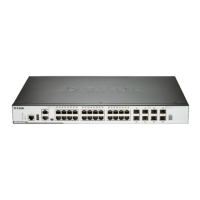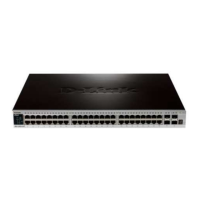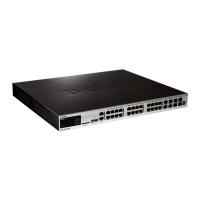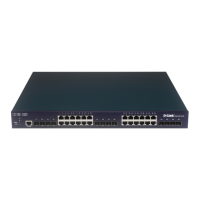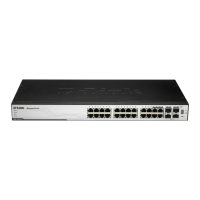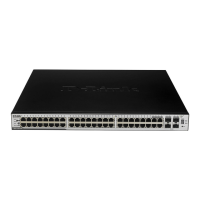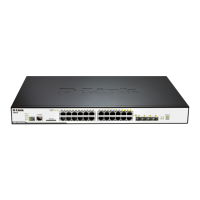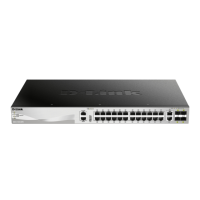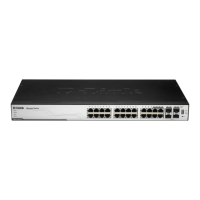Do you have a question about the D-Link DGS-3630 SERIES and is the answer not in the manual?
Explains 2-port and 4-port stacking configurations for DGS-3630 series switches, detailing port usage.
Defines Primary Master, Backup Master, and Slave roles in a stack and how they are assigned automatically.
Details the behavior and election process when switches are hot-swapped in a stack.
Provides command-line interface steps to enable stacking and configure a switch as the master.
Outlines the graphical user interface steps for enabling stacking, setting priorities, and connecting switches.
Explains that only the Master switch is accessible for management after stacking.
Details how slave switch configurations are accessed through the master switch interface.
Describes how to remove SFP+ Direct Attach cables and disable stacking mode.
Explains 2-port and 4-port stacking configurations for DGS-3630 series switches, detailing port usage.
Defines Primary Master, Backup Master, and Slave roles in a stack and how they are assigned automatically.
Details the behavior and election process when switches are hot-swapped in a stack.
Provides command-line interface steps to enable stacking and configure a switch as the master.
Outlines the graphical user interface steps for enabling stacking, setting priorities, and connecting switches.
Explains that only the Master switch is accessible for management after stacking.
Details how slave switch configurations are accessed through the master switch interface.
Describes how to remove SFP+ Direct Attach cables and disable stacking mode.
| Layer | Layer 3 |
|---|---|
| MAC Address Table Size | 32K |
| Power Supply | 100-240V AC, 50/60Hz |
| Management | CLI, SNMP |
| Standards Compliance | IEEE 802.1D, IEEE 802.1Q, IEEE 802.1w, IEEE 802.1s, IEEE 802.3ad, IEEE 802.3x |
| Dimensions | 440 x 250 x 44 mm (17.3 x 9.8 x 1.7 inches) |
| Power over Ethernet (PoE) | Available on some models (DGS-3630-28PC, DGS-3630-52PC) |
